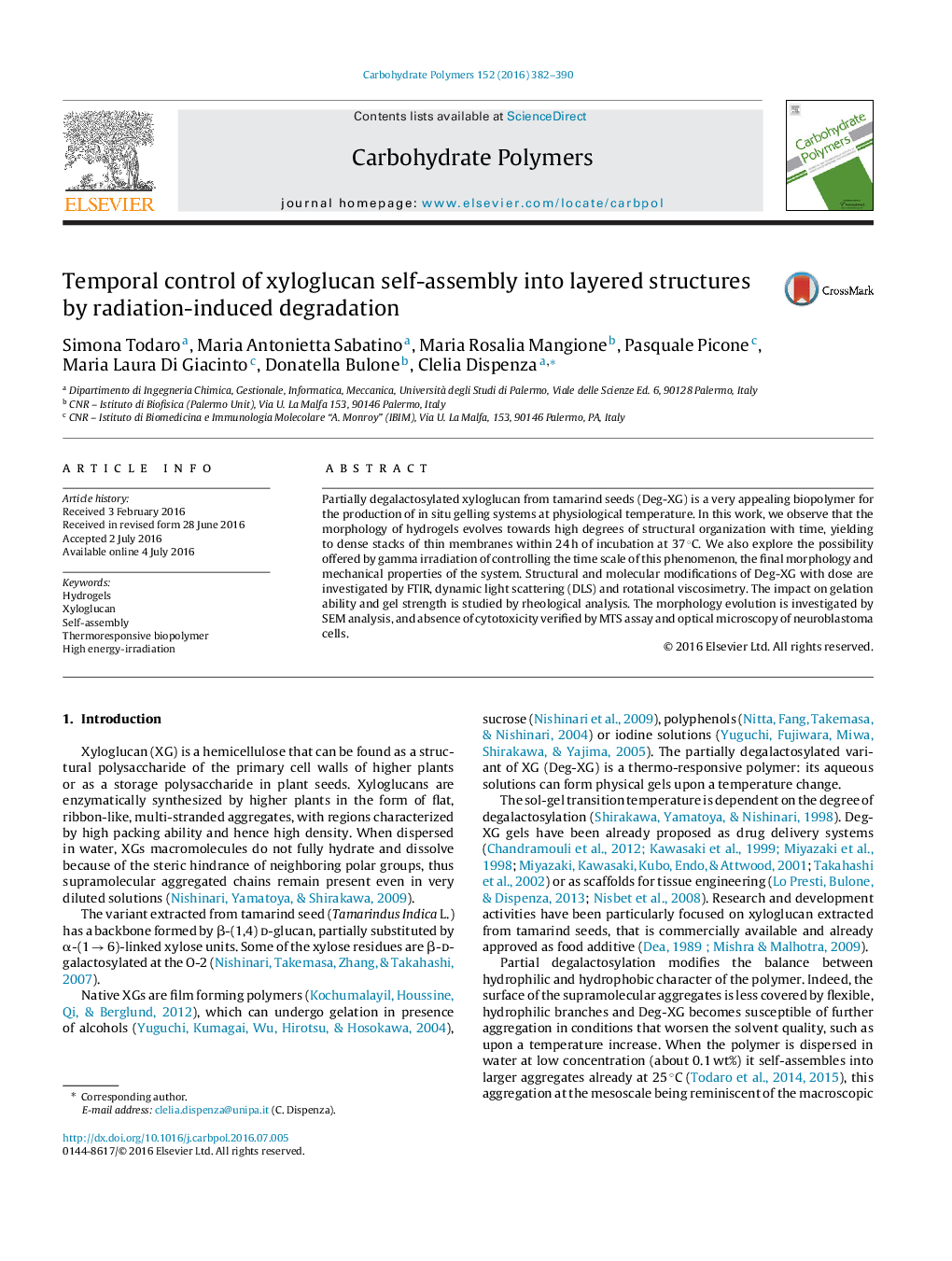| Article ID | Journal | Published Year | Pages | File Type |
|---|---|---|---|---|
| 1373656 | Carbohydrate Polymers | 2016 | 9 Pages |
•Degalactosylated xyloglucan gels develop a lamellar morphology if incubated at 37 °C.•Irradiation reduces the molecular weight of the polymer in a dose-dependent fashion.•The auto-organization in lamellae is faster for low dose irradiated xyloglucans.•Irradiation at too high doses impairs ordering leading to weaker gels.•Absence of cytotoxicity from gels leachates is demonstrated.
Partially degalactosylated xyloglucan from tamarind seeds (Deg-XG) is a very appealing biopolymer for the production of in situ gelling systems at physiological temperature. In this work, we observe that the morphology of hydrogels evolves towards high degrees of structural organization with time, yielding to dense stacks of thin membranes within 24 h of incubation at 37 °C. We also explore the possibility offered by gamma irradiation of controlling the time scale of this phenomenon, the final morphology and mechanical properties of the system. Structural and molecular modifications of Deg-XG with dose are investigated by FTIR, dynamic light scattering (DLS) and rotational viscosimetry. The impact on gelation ability and gel strength is studied by rheological analysis. The morphology evolution is investigated by SEM analysis, and absence of cytotoxicity verified by MTS assay and optical microscopy of neuroblastoma cells.
